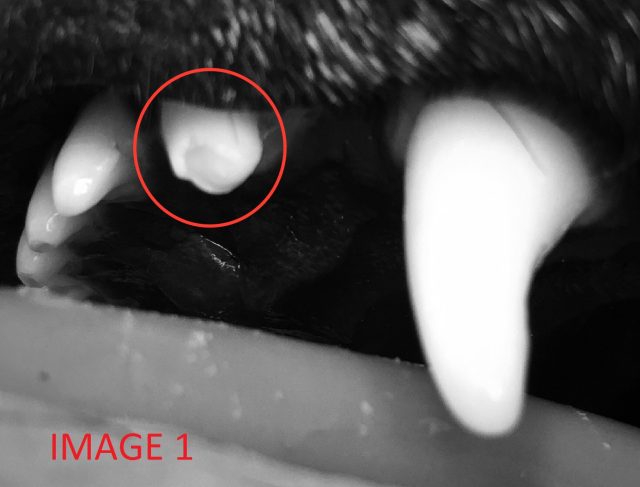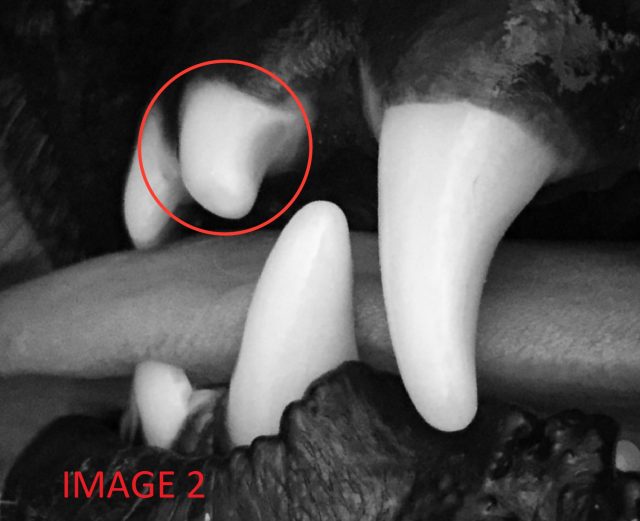Bonded Sealants
Tooth fractures occur commonly in pets. This is especially true for dogs who like to chew on hard things such as bones, sticks, rocks, etc. Fractured and chipped teeth can also happen by accident in both cats and dogs when they are playing rambunctiously and run into things. Regardless of the reason, tooth fractures are considered a form of oral pathology. There are two types of tooth fractures: complicated crown fractures and uncomplicated crown fractures.
A complicated crown fracture is one which results in exposure of the pulp or root within the center of the tooth. You can often see bleeding associated with this type of fracture. The only options for treating a complicated crown fracture are to either perform a root canal or extract the tooth.
Uncomplicated crown fractures do not result in pulp exposure. Instead, this type of fracture can be characterized by disruption or removal of the enamel with exposure of the underlying dentin. Dentin is a layer of living tissue with tiny tubules (dentin tubules) that communicate with the nerve or root of the tooth. Although these types of fractures may appear minor on first glance, the reality is that with exposure of dentin, the following problems may arise:
- Pain or sensitivity similar to the sensitivity humans feel with gum recession or cavities.
- Infection of the root canal system. When dentin is exposed bacteria can gain access to the dentin tubules that run from just beneath the enamel all the way down to the root canal.
- Periodontal disease. When a chip or fracture occurs, enamel is removed and the surface of the tooth becomes rougher allowing plaque and tartar to accumulate more readily. This can contribute to a more rapid onset of periodontal disease.
Bonded sealants can be used to treat uncomplicated crown fractures. However, before proceeding with a bonded sealant, the affected tooth requires further assessment to ensure the procedure is appropriate. Dental radiographs are used to assess whether the root canal has been affected by the fracture. If the radiograph shows any evidence of a root canal infection a bonded sealant cannot be used, and the tooth needs to undergo a root canal or be extracted. If there is no radiographic evidence of infection, a bonded sealant can be used.
The procedure for applying a bonded sealant is as follows:
- The tooth was smoothed and reshaped using fine sanding discs.
- Following smoothing and reshaping, the tooth was cleaned and dried.
- An acid etch was then applied to the tooth to help promote adherence of the other materials used.
- A bonding agent is applied which fills the dentin tubules and blocks the pathway for infection.
- The tooth was sealed with an unfilled resin (similar to clear nail polish) and light cured which accelerates the hardening of the resin.
Bonded sealants are a great alternative for treating teeth with uncomplicated crown fractures which might otherwise be extracted.


